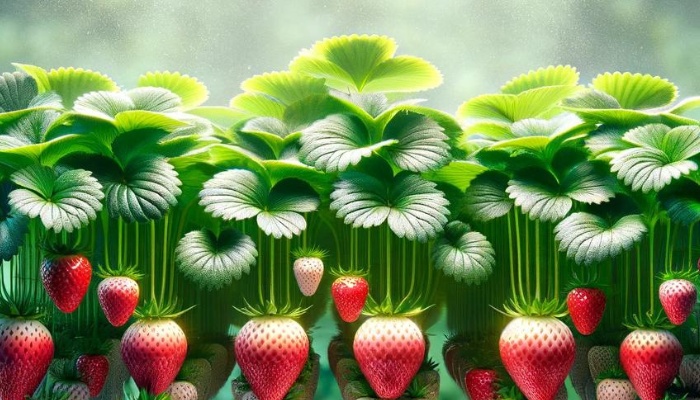Temperature and humidity levels can either make or break your hydroponic garden’s success. You’re likely already aware that these factors are important, but finding the best ranges for optimal growth can be a tricky balance.
As we explore the ideal conditions for your plants to thrive, you’ll discover how subtle adjustments can lead to significant improvements in plant health and yield.
Let’s explore how to monitor and tweak these environmental factors to ensure your hydroponic garden flourishes, tackling common challenges along the way.
Understanding Plant Needs
To optimize growth in hydroponic systems, you must understand your plants’ specific temperature and humidity requirements.
Two additional critical factors significantly influence plant development: light requirements and nutrient concentration. You’ve got to strike the right balance to ensure your plants thrive.
Light requirements vary extensively among plant species, directly affecting photosynthesis rates. Adequate light ensures your plants can convert light into the energy needed for growth.
However, it’s not just about the quantity; the quality of light, including spectrum and duration, is equally vital.
You’ll need to adjust your lighting setup to mimic the optimal conditions for your plants, ensuring they receive the right amount of light at the correct intensity and wavelength.
Another key aspect is nutrient concentration in the solution. Each plant has unique nutrient needs, which change over different growth stages.
Over-concentration can lead to nutrient burn, while under-concentration might result in nutrient deficiencies and stunted growth.
Maintaining the ideal concentration that matches your plant’s growth phase requires precise control and regular adjustment of the nutrient solution.
Understanding and managing these aspects effectively will lead to healthier, more productive plants in your hydroponic system.
Ideal Temperature Ranges
Maintaining an optimal temperature range is essential for maximizing plant growth and health in hydroponic systems.
Different plants have varying temperature preferences, but a general guideline is to keep your hydroponic setup between 65°F and 80°F. Straying too far outside this range can stress plants, hindering their ability to absorb nutrients and grow.
The technical aspect of managing temperature involves a keen understanding of seasonal effects.
During warmer months, you’ll need to ensure your water doesn’t get too hot. High temperatures can lead to oxygen depletion in the water, stressing your plants.
Conversely, in cooler seasons, maintaining a minimum temperature is vital to prevent slow growth or even dormancy in your plants.
Equipment maintenance plays a big role in temperature regulation. Regularly checking and calibrating heaters, coolers, and water temperature sensors ensures your system responds effectively to any temperature fluctuations.
This proactive approach preserves optimal growing conditions and extends the lifespan of your equipment, ensuring your hydroponic system operates efficiently year-round.
Optimal Humidity Levels
Humidity, the amount of water vapor in the air, directly influences plant growth, health, and productivity. Understanding and managing the sources and effects of humidity are paramount.
- Sources of Humidity: Evaporation from nutrient solutions and transpiration from plants are primary humidity sources in hydroponic systems. These natural processes contribute to the overall moisture content in the air.
- Optimal Humidity Range: Generally, a humidity range of 40-60% is considered optimal for most hydroponic crops. This range supports adequate transpiration without causing undue water loss or stress to plants.
- Humidity Effects on Plant Growth: Proper humidity levels ensure that plants can efficiently take up nutrients and carbon dioxide, essential for photosynthesis and growth.
- Preventing Disease: High humidity can promote the growth of mold, mildew, and other pathogens. Maintaining optimal levels reduces the risk of plant diseases.
- Stomatal Regulation: Humidity affects stomatal opening in plant leaves, regulating water loss and gas exchange. Optimal humidity ensures that stomata function efficiently, supporting healthy plant physiology.
Understanding these aspects allows you to create and maintain the ideal humidity level, promoting a healthy and productive hydroponic garden.
Monitoring and Adjusting
Proper equipment selection is essential for effectively monitoring and adjusting conditions within your hydroponic system. You’ll need accurate hygrometers and thermometers capable of providing real-time data on the environment.
It’s not just about having these tools but also understanding their specifications and limitations. When it comes to data interpretation, precision is key.
You must be able to discern even slight deviations from the desired ranges as these could indicate the onset of issues that may affect plant growth.
The data collected should inform your actions—whether it’s increasing ventilation to reduce humidity or using heaters to raise the temperature.
Adjusting the environment requires a delicate balance. Automated systems, such as humidifiers and dehumidifiers, can regulate conditions but must be calibrated correctly.
Manual adjustments might be necessary in some situations, requiring you to intervene directly.
Common Challenges and Solutions
While managing temperature and humidity within hydroponic systems, gardeners often encounter specific challenges that demand targeted solutions. If not promptly addressed, these issues can significantly affect plant growth and yield.
Understanding the common problems and implementing effective strategies can help maintain optimal conditions.
- Lighting Impact on Temperature: High-intensity lights can raise the temperature beyond the ideal range. To mitigate this effect, use LED lights, which emit less heat, or install adequate cooling systems.
- Inconsistent Humidity Levels: Fluctuating humidity can stress plants. Use humidifiers or dehumidifiers to stabilize levels, depending on your system’s needs.
- Nutrient Management: Imbalanced nutrient solutions can affect plant health. Regularly check and adjust the concentration and pH of your nutrient solution to ensure plants receive the right amount of nutrients.
- Ventilation Issues: Poor air circulation can lead to hotspots and humidity buildup. Ensure your system has efficient ventilation to distribute air evenly.
- Water Temperature Control: Roots in overly warm water may struggle to absorb oxygen, leading to stress. Employ water chillers or heaters to keep the water temperature within the desired range.
Addressing these challenges through careful monitoring and adjustment will lead to a more successful hydroponic garden.

